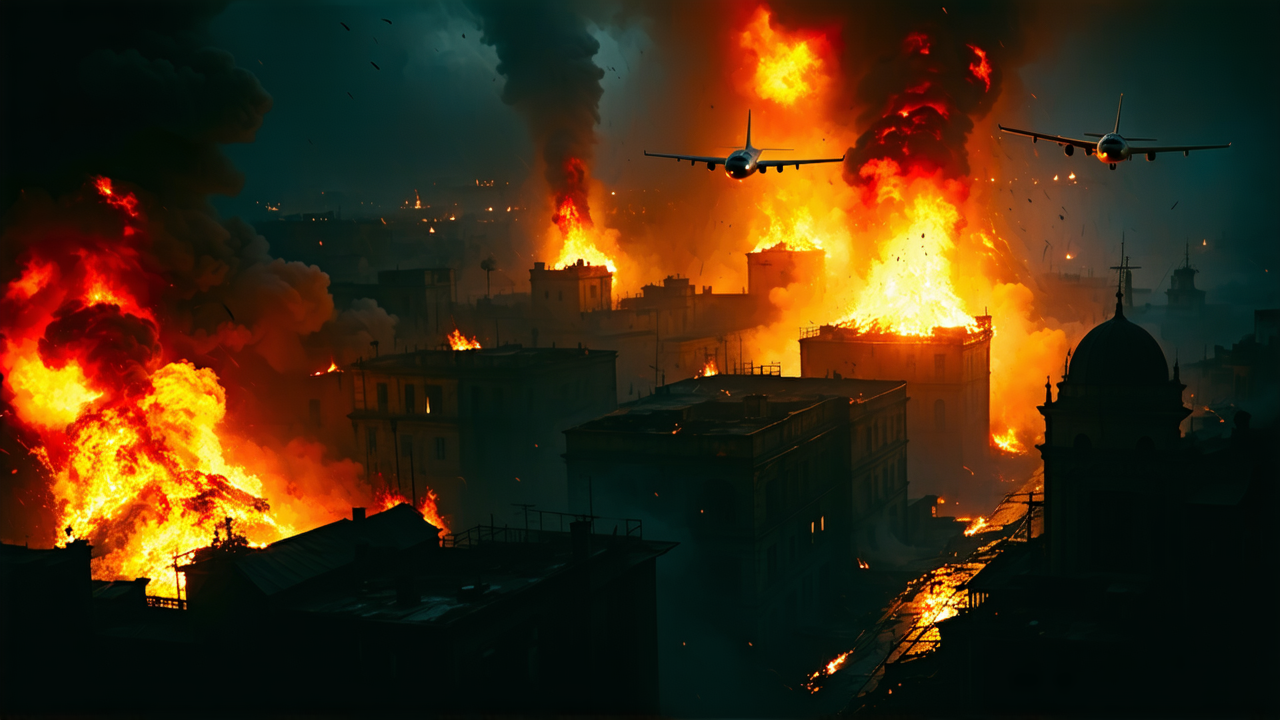Russia Launches Major Aerial Attack on Kyiv Hours Before High-Level Talks on Ukraine Support
Russia Launches Major Aerial Attack on Kyiv Hours Before High-Level Talks on Ukraine Support
In a shocking escalation of violence, Russia launched one of its largest aerial assaults on Kyiv in recent months, just hours before a high-level meeting was set to take place between the UK and Germany to discuss U.S. President Donald Trump’s plans for NATO allies to provide Ukraine with weapons. The attack, which occurred overnight into Monday, killed two people and wounded 15, including a 12-year-old, according to Ukrainian President Volodymyr Zelenskyy.
The drone and missile assault on Kyiv underscored the urgent need for further Western military aid, particularly in air defense, a week after Trump claimed that deliveries would arrive in Ukraine within days. The attack, which began shortly after midnight and continued until around 6 a.m., left residents of the capital in fear, with the sounds of machine gun fire, buzzing drones, and loud explosions keeping them awake.

In one Kyiv district, a kindergarten, a supermarket, and warehouse facilities caught fire, officials said. Ukraine’s air force reported that Russia launched 426 Shahed and decoy drones overnight Monday, as well as 24 missiles of various types. It said 200 drones were intercepted with 203 more jammed or lost from radars.
The virtual meeting, led by British Defence Secretary John Healey and his German counterpart Boris Pistorius, was expected to focus on a “50-day drive” to get Kyiv the weapons it needs to fight Russia’s larger army and force Russian President Vladimir Putin to the negotiating table. The meeting will include U.S. Defence Secretary Pete Hegseth, NATO leader Mark Rutte, and NATO’s Supreme Allied Commander Europe, General Alexus Grynkewich.
Trump’s arms plan, announced a week ago, involves European nations sending American weapons to Ukraine via NATO — either from existing stockpiles or buying and donating new ones. The U.S. president indicated that discussions were partly focused on advanced Patriot air defense systems and said a week ago that deliveries would begin “within days.” However, various senior officials suggested no transfers had yet taken place.
Germany has said it offered to finance two new Patriot systems for Ukraine and raised the possibility of supplying systems it already owns and having them replaced by the U.S. But delivery could take time, as “they have to be transported, they have to be set up; that is not a question of hours, it is a question of days, perhaps weeks,” said German politician Friedrich Merz.
Switzerland’s defense ministry said Thursday that it was informed by the U.S. Defence Department that it will “reprioritise the delivery” of five previously ordered systems to support Ukraine. Meanwhile, NATO officials said the alliance is still coordinating the delivery of other military aid — such as ammunition and artillery rounds — which includes aid from the U.S. that was briefly paused.
Zelenskyy said Saturday that his officials have proposed a new round of peace talks this week. Russian state media on Sunday reported that no date has yet been set for the negotiations, but said that Istanbul would likely remain the host city. The Kremlin spokesman said Sunday that Russia is open to peace with Ukraine, but achieving its goals remains a priority.
It was the first major attack on Kyiv since the beginning of the year, and it has reignited fears among Ukrainian citizens and international observers alike. As the high-level meeting takes place, the world watches closely to see whether the promises of military support will be fulfilled and whether peace can be achieved in the region.
